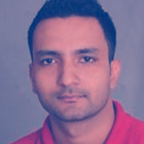If Data Is The New Black Gold Then Medical Data Is The New Gold!
As a passionate computational scientist and futurist, I monitor, track and anticipate upcoming, significant trends that are converging together at a fast pace. According to the experts in academia and industry, we have entered the Big Data Age and are transitioning into the Artificial Intelligence (AI) Age, which has the potential to transform all major industries and sectors. This is especially relevant for domains like search engine (Google), e-commerce (Amazon, Flipkart), social networking (Facebook, LinkedIn) etc.
We at Brainpan Innovations, are vigorously analyzing the healthcare space in the developing nations. We tend to defer with the trend and believe that we are in an age of ‘Little Data, Old Data, No Data’ because as a society, we are still dwelling on a 5,000 year technology, which is paper.
What baffles us is that most Indian doctors are on top of the ‘New Gold’ mine, but do not completely understand the potential and value of the asset they own. According to our survey in Tier II cities (Y Class in HRA Classification), the number of patients per day in private clinics vary from 10–25 and in hospitals vary from 50–200, generating couple of thousands medical data records annually. However, this data is residing in paper-based prescriptions and medical reports, and not in electronic form i.e. EHR.
The value of electronic medical data is surprisingly underestimated and underutilized in our country. Right from acting as catalysts in drug developmental projects to customized private care, their utilities are endless. As an example, comprehending the structure of the medical data held in thousands of data points of the EHR systems can quickly find relevant patterns, consequently, helping us reveal the most advantageous way to define the line of treatment while simultaneously determining what drugs, tests, and other procedures contribute to the optimal outcome. Below for reference are a few supporting facts.
In 2011, Sanofi Aventis successfully show that EHR resulted in numerous patient improvements with Type 2 diabetes and heart disease. It was a 12-month project to track 119 patients over a six-month period at two pilot sites.
In 2016, Pfizer used anonymous EHR data in developing Xalkori as the first USFDA drug specifically for lung cancer patients with the ALK gene mutation.
To be able to make a difference to people’ lives and address unmet patient needs, the healthcare companies require to have access to health data, so as to implement AI techniques like machine learning algorithms to improve their medical diagnosis.
In India, with a population of 1.25+ billion, non-communicable diseases are on the rise and cardiovascular diseases (24%), chronic respiratory diseases (11%), cancer (6%) and diabetes (2%) are leading cause of mortality.
Question to all of us — why are doctors in India not leveraging this enormous data pool to accelerate AI, Machine Learning or more precisely Computer Aided Diagnosis (CAD)? Wouldn’t it be better to have an algorithm which analyzes chest CT and detects emphysematous regions in the lungs or alerts when there is an indication of pulmonary hypertension? Other possible uses in acute cases of heart ailments, strokes, or quantifying high-risk pregnancies, fibroids from gynecology viewpoint will be ground-breaking.
Our startup Brainpan Innovations (Stealth Mode) is continuously developing and improving the Data Driven Preventive EHR platform ‘Doctor’s Dairy’ which envisions to address all such scientific challenges by bridging the gaps with Life Sciences and Computing.
